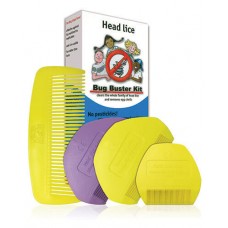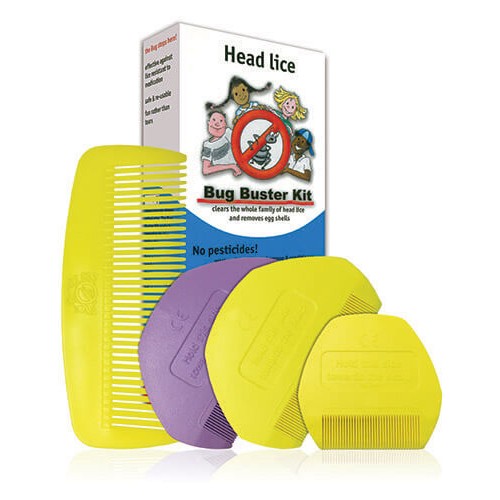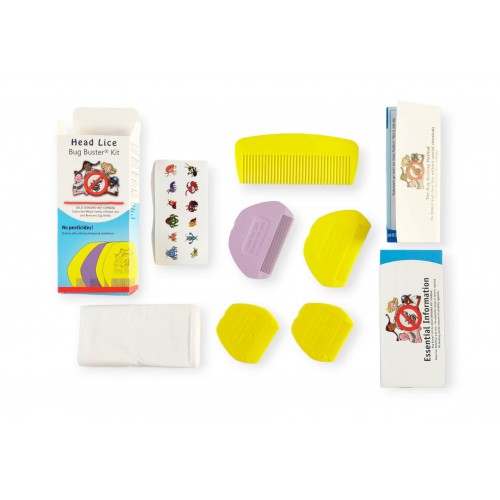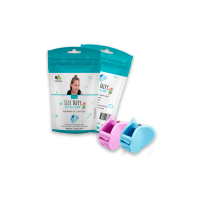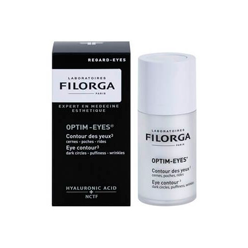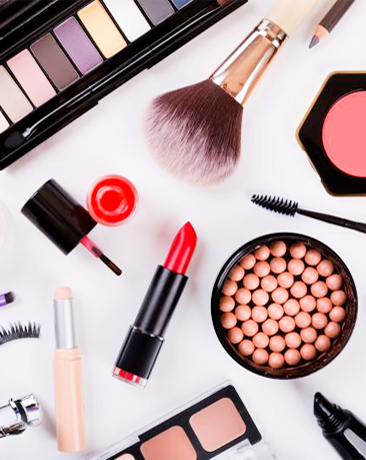Head Lice Bug Buster Kit – 5 combs, Unique Set to Fight Head Lice, "Wet Combing" is recommended by the NHS
“Wet Combing: The Bug Buster® kit is the only head lice removal (and detection) method that has been evaluated in randomized controlled trials, and it is available on the NHS. " - NHS NICE CKS 2021
"The Bug Buster wet combing kit scores 9/10, the best treatment for head lice compared with other products, scoring 3-6/10. The Daily Mail, 2014
The TV Doc, Dr Hilary Jones, advises families unable to get rid of head lice that our Bug Buster kit is ideal. "No treatment is guaranteed to kill all head lice and their eggs. But the Bug Buster kit is ideal for their detection and eradication, and it allows you to carry on using your regular shampoo and conditioner. Follow the instructions and you should get rid of the problem for good." 2007
Vital knowledge about the life-cycle from https://www.chc.org/for-parents-2/
- A head louse (Pediculus humanus capitis) usually hatches 7 to 10 days after the egg is laid (but the maximum range is 5 to 11 days).
- A newly-hatched head louse becomes full-grown (3mm long) in a minimum of 6 days.
- Full-grown head lice move from head to head; younger lice tend to stay on the head where they hatch.
- Full-grown lice mate and the female starts laying eggs, at the earliest on day 7 after she herself hatched.
Breaking the life-cycle
Preventing head lice from spreading: it is critical to remove the lice from the head before they are six days old
Preventing head lice from reproducing: a new generation of eggs can be laid from day seven after hatching
Many products rely on killing lice as they hatch because it is difficult to kill live eggs with chemicals, and hard to ensure the removal of all eggs by combing.
With a double dose treatment, applied on day 1 and a week later (day 8) the three risks are that:
- Lice hatch from eggs directly after the first application and reach adulthood before the second application, so they can spread and lay eggs
- Lice may continue to hatch till day 11 even after a second application on day 7/8
- New full-grown lice, caught from other infested heads between applications, will lay more eggs.
Remember that whatever the product, you always have to check for lice on days 5, 9 and 12/13 and remove them to avoid the three risks of continuing infestation.
You can cover all three risks with a Bug Buster Kit alone. Use the specially designed combs according to the step-by-step instructions for detection, cure and nit removal.

